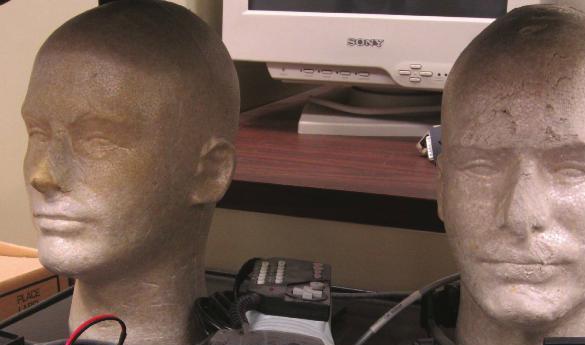3-D Visualization lab opens for classes in spring 2014
Located on the bottom floor of Exploratory Hall is the brand new Visualization Lab, boosting students’ educational experiences through the use of three-dimensional high definition technology.
In the works since the remodeling of Exploratory Hall, construction on the lab began in late May. The lab is expected to be completed in early 2014.
Justin Brown, the director of information technology and security, has been working with Senior Engineer Duane King on preparing the visualization lab for use.
“Without a high expenditure, we hope to give faculty a way to present 3-D high resolution to their students in a inspirational way,” Brown said.
Some of the technology found in the Visualization Lab is the same type of machinery used to develop game software, diagnose diseases in the medical field and assess a crime scene. Computers were donated from the FBI to promote a higher technological learning environment for students entering the crime investigation field.
The 3-D glasses will be provided by the lab and use shuttering mechanics, in which small LCD frames will switch images alternating between each eye, to create the image seen projected off of the screen.
Along with 3-D technology like the projector, TV and glasses, students will have access to The Oculus Rift, a gadget used by video game developers that has two different eye displays for each eye to create a singular realistic image to the mind.
The lab hopes to eventually obtain head trackers to use in pair with the Oculus Rift. Head trackers have the ability to sense when the user of the Oculus Rift moves their head and moves the image along with them. This type of technology can be used to virtually assess crime scenes and with various phobia therapies.
Computer workstations will also be provided to assist with rendering the visualization process.
The Visualization Lab was recently painted a dark gray in order to eliminate reflexive surfaces in the room to allow for optimum viewing of 3-D images.
A tile display wall of multiple high definition TVs mounted against a wall will be installed and used for demonstrations, such as looking at satellite pictures of earth and observing the temperature patterns and following the oceans currents.
The Visualization Lab should be ready for use during the spring semester. Forensic science and biology classes will test the lab starting in January.
“Because of their need for space is the reason they will be able to use the room experimentally for the spring semester,” Brown said.
This new visualization lab is not the first on the Fairfax campus. The original lab was located in Planetary Hall and used similar machinery, such as the Oculus Rift, but also included a SEGA power glove and multiple generations of supercomputers.
“These supercomputers cost around one million dollars and are about 1/20 the speed of current computers,” Brown said. “Not even faster than my phone.”
The studies and research done in the original lab earned grants to raise the funds for the new Visualization Lab
In 2005, the old Visualization Lab was shut down in anticipation for the remodel and reopening of the newer lab.The older version of the lab was geared toward research and studies of groundbreaking science, while the new lab is focused on applicability.

